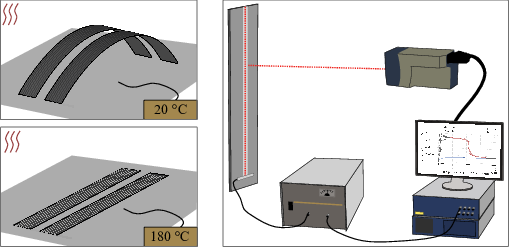Fiber metal laminates (FML) are a promising material as they combine the high specific properties of fiber-reinforced polymers with the ductility and damage tolerance of metals. However, during manufacturing in-plane residual stresses arise in the single layers of the laminate. The stresses mainly originate from the different coefficients of thermal expansion of the two materials and lead to an inhomogeneous stress state in the thickness direction of the FML. From homogeneous materials, it is known that stress due to external loads affects the propagation behavior of guided ultrasonic waves (GUW) in thin structures. Nevertheless, the magnitude of this effect is mode and frequency dependent. In the case of FML, the question is whether the inherent residual stresses also influence the dispersion characteristics of propagating GUW. With modified cure cycles, different residual stress states are realized in FML specimens made of carbon fiber-reinforced polymer and steel. An established measurement procedure using laser scanning vibrometry and multi-frequency excitation is used to determine the dispersion diagrams for the manufactured FML specimens. After processing the data with a nonuniform 2d discrete Fourier transform, the phase velocities over the measured frequency for the fundamental modes are compared for the different residual stress states. The results indicate that the variation of the residual stresses in the investigated FML does not show any significant effect on the GUW propagation for the measured frequencies.
J. Wiedemann, T. Barth, T. Roloff, T. Kluge, N. Rauter, C. Hühne
Influence of residual stresses on the dispersion behavior of guided ultrasonic waves in fiber metal laminates
Proceedings of the Fourteenth International Workshop on Structural Health Monitoring (IWSHM), (2023) [LINK]

